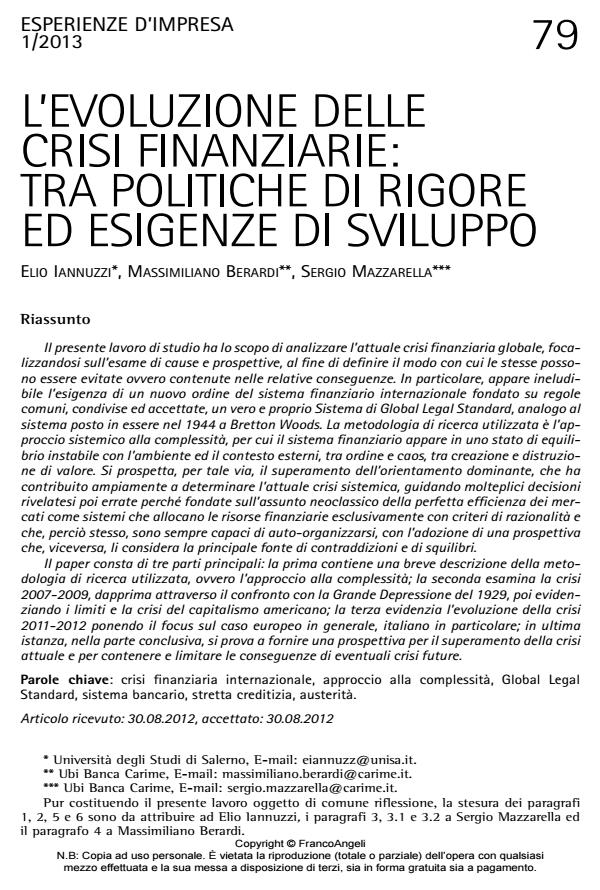The evolution of financial crises between austerity and growth
Journal title ESPERIENZE D'IMPRESA
Author/s Elio Iannuzzi, Massimiliano Berardi, Sergio Mazzarella
Publishing Year 2013 Issue 2013/1
Language Italian Pages 29 P. 79-107 File size 1000 KB
DOI 10.3280/EI2013-001004
DOI is like a bar code for intellectual property: to have more infomation
click here
Below, you can see the article first page
If you want to buy this article in PDF format, you can do it, following the instructions to buy download credits

FrancoAngeli is member of Publishers International Linking Association, Inc (PILA), a not-for-profit association which run the CrossRef service enabling links to and from online scholarly content.
This study aims at examining the current global financial crisis, by emphasizing its main causes and perspectives to define the way they can be avoided in the future and their consequences. We think that there is a need for a new International Financial System, based on common rules, a real Global Legal Standard similar to the System created in 1944 in Bretton Woods. According to the Complexity Approach, financial markets can be thought as Complex Adaptive Systems (CAS), which may precipitate in disorder and chaos because of a seemingly mild event which activates latent forces and leads to emerging and unpredictable consequences. In this perspective, the crises are implicit features of these kinds of markets, due to their high uncertainty and hyper-competitiveness, rather than temporary deviation from normal equilibrium (traditional view). The paper consists of three main parts: the first concerns a brief description of the research methodology, i.e. the Complexity Approach; the second examines the crisis of 2007-2009, initially through the comparison with the Great Depression of 1929, then showing the limits and the crisis of American capitalism; the third shows the evolution of the 2011-2012 crisis by placing the focus on the case of Europe and Italy; finally, the authors try to show a perspective to overcome the current crisis and to contain and reduce the impact of future crises.
Keywords: International financial crisis, the complexity approach, Global Legal Standard, banking, credit crunch, austerity.
Elio Iannuzzi, Massimiliano Berardi, Sergio Mazzarella, L'evoluzione delle crisi finanziarie: tra politiche di rigore ed esigenze di sviluppo in "ESPERIENZE D'IMPRESA" 1/2013, pp 79-107, DOI: 10.3280/EI2013-001004